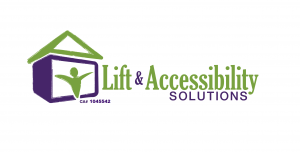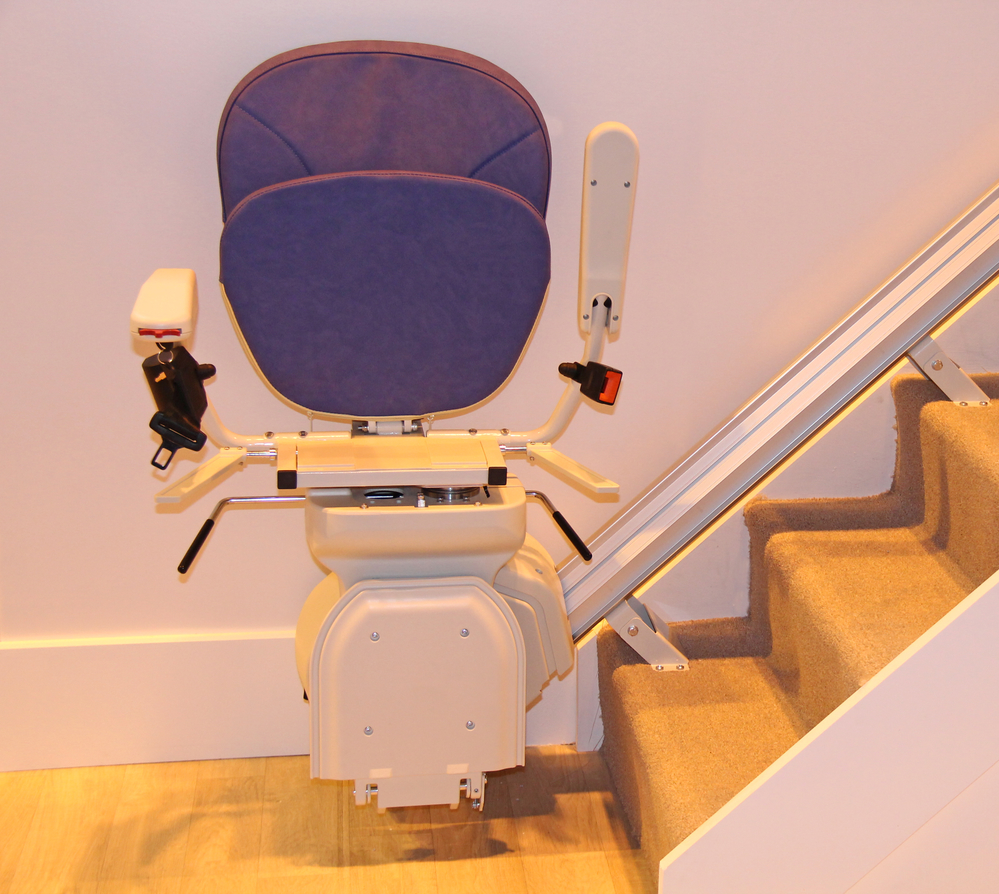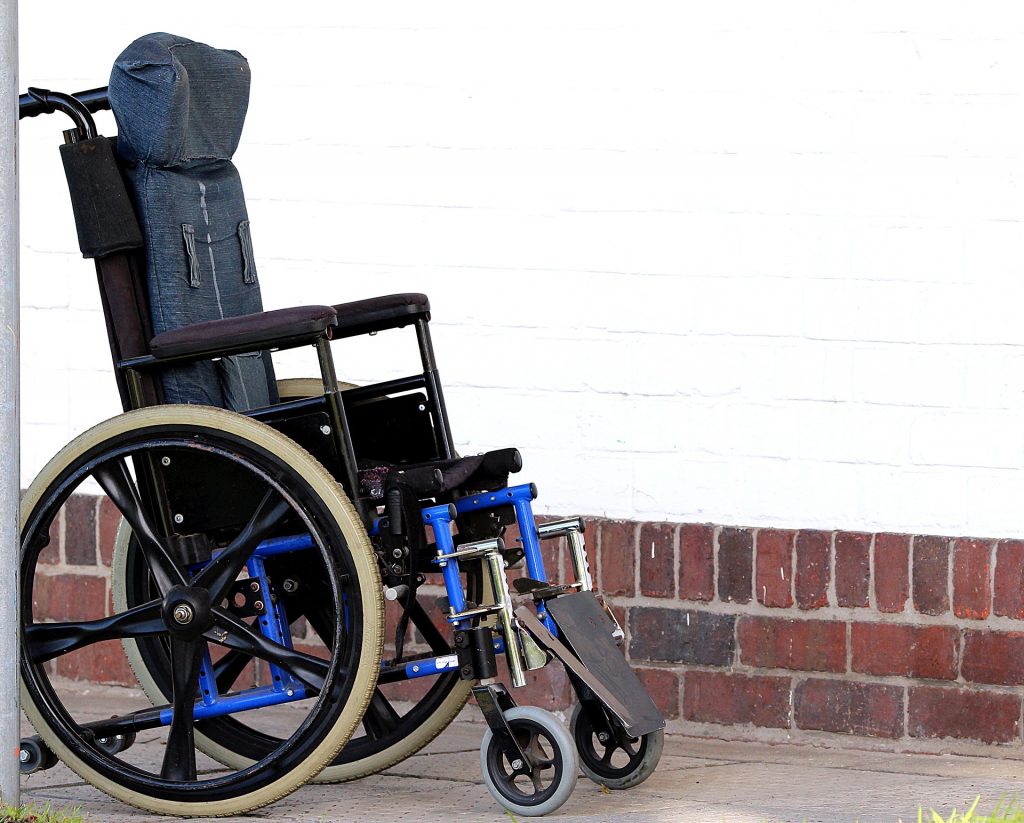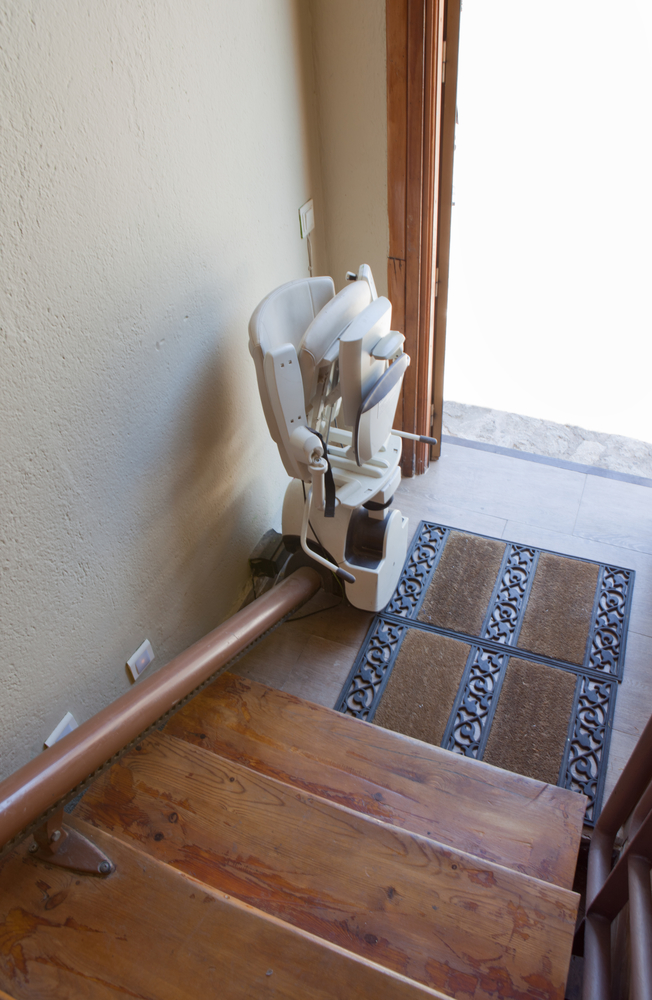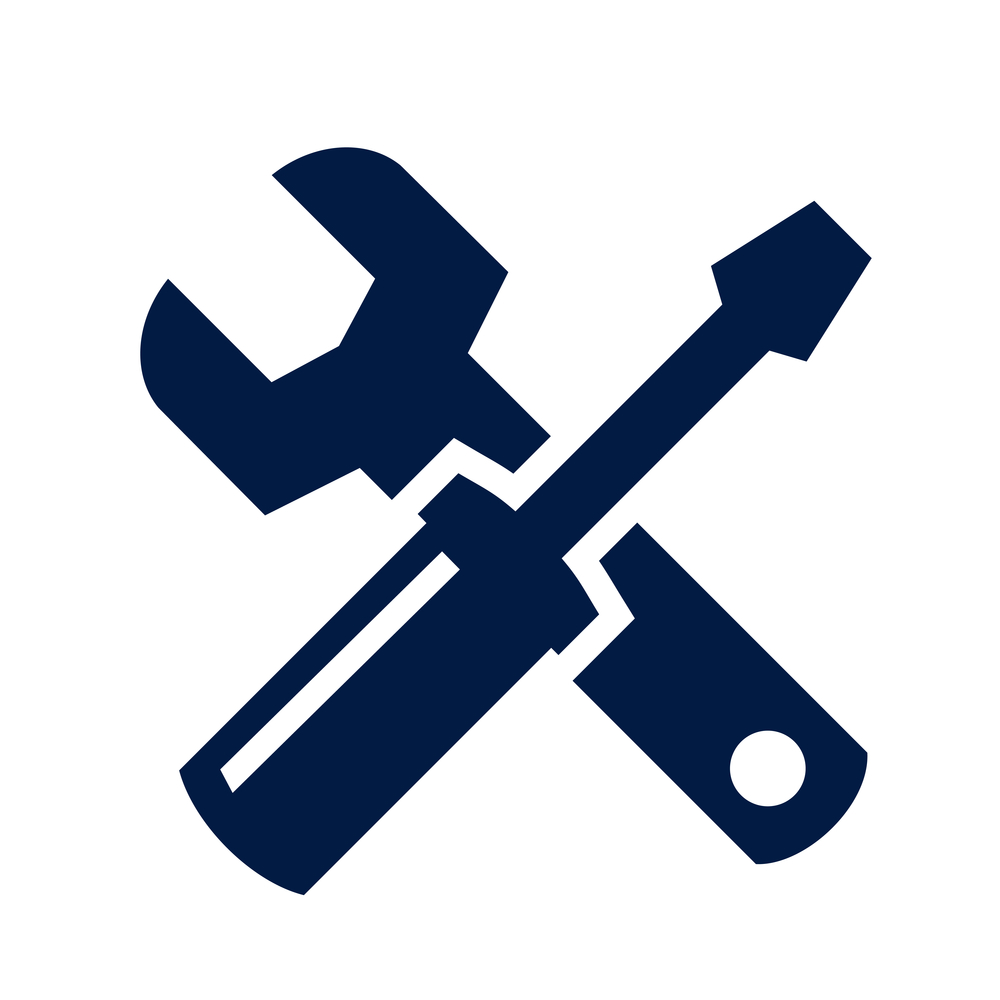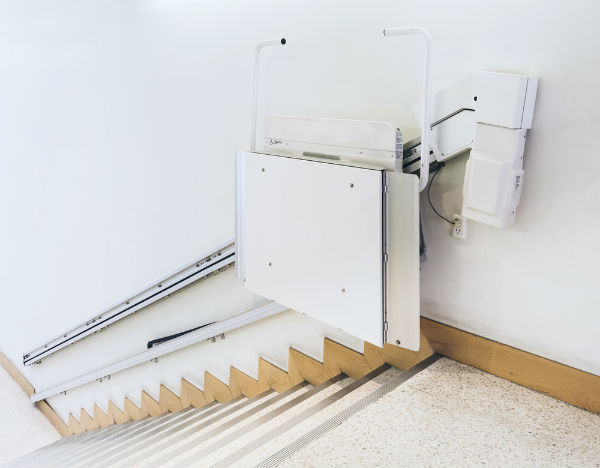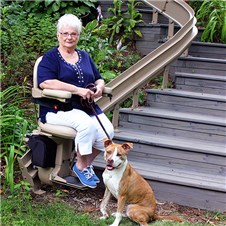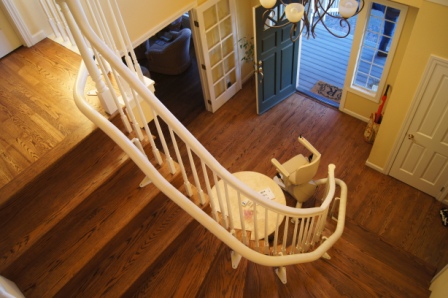23 Mar 2018
Making The Decision To Get A Stair Lift
All the time, all over the world, people are aging and getting older. As people age, they prefer to remain at home as long as possible and to retain their independence.
Making The Decision To Get A Stair Lift?
Stairlifts Address A Crucial Need
Many seniors walk a fine line between the need to be assisted and being independent, and one’s ability to walk up and down the stairs is one of the most common activities to hinder a person’s independence. This is why getting a stairlift for the home is worth it.
Stairlifts allow seniors to head up or down the stairs without having to ascend or descend them under their own power. You sit in a chair and ride up or down thanks to a quiet motor. If you have a mobility issue, or simply have problems walking without an aide, a stairlift in your home can help you do your regular activities without assistance and remain in your own home longer.
Stairlifts Fit Your Lifestyle
You can have a stairlift inside or outside the home. Stairlifts are very helpful getting either up to the second floor or down to the basement. Some stairlifts even curve to a flight of stairs so that you can ride the same lift up multiple stories.
You can even install a stairlift on stairs that go to your porch or patio, as some stairlifts endure extreme weather conditions. If you like taking walks or going to the store, you don’t have to be hindered by the stairs to your front door.
Get One Before Becoming Immobile
While some seniors might not completely be immobile, accidents and mistakes can still occur when attempting to use the stairs in one’s home. Maybe your legs work fine, but impaired vision or balance problems make it dangerous to walk up and down stairs. This is another reason why a stairlift can be beneficial: no more accidents.
Anything that makes walking dangerous could be a great reason to purchase a stairlift, so consider getting a stairlift to continue to enjoy the benefits of safe, independent living.
As we and our loved ones age, mobility begins to become more of an issue with each passing year. Old injuries, the progress of arthritis, loss of balance, and various other aspects of a normal aging process start to limit what we can do and where we can go, even within our own homes. Persons with physical disabilities may also find that they are unable to move freely throughout their home and need some extra help getting around. For many, installing a lift in their multi story home restores a great deal of their mobility and independence. Let’s take a look at the different types of lifts and how each can help seniors and the disabled regain both their mobility and their freedom to move around their home.
Stairlifts
Quite possibly the most popular accessibility lift option, stair lifts offer many options and features that allow installers to customize them to the individual needs and home of the user. A sturdy rail support with a folding seat is installed on the wall of a staircase leading to the floor to which the user needs easier access. Powered by an electric motor, these lifts allow anyone to sit on the folding seat and ascend or descend the staircase without needing to climb the steps themselves. Stairlifts and accessories can also be matched to the decor of your home without compromising the style or aesthetic as well. Best of all, in addition to being one of the most versatile home accessibility lift options, stairlifts are also among the most economical options, too.
Wheelchair Lifts
While somewhat bulkier than stairlifts, wheelchair lifts offer the ability to make every floor in your home wheelchair accessible. Like a stairlift, wheelchair lifts have a folding platform mounted to a sturdy rail system installed in the wall of the staircase. Users unfold the platform and maneuver their chair onto it, usually securing themselves and their chair via an installed stability bar or similar mechanism. All that remains is a push of the “up” button, and they can be on the second floor independently in seconds. Wheelchair lifts can also be customized to better suit the decor and aesthetics of your home, allowing you to make them less visually obtrusive.
Personal Elevators
For those who have stairways too narrow for stair or wheel chair lifts, personal elevators make an excellent option. These unique lifts do not require a shaft to function, and can be installed directly through floors to reach levels of the home above or below them. These are an exceptionally quiet and safe option for users who use a wheelchair or for whom stair climbing and descent are no longer an option. Personal elevators also allow users to place them more discreetly within their home to keep their interior design and decor intact, too. While they are probably the most efficient option that requires the least amount of home renovation, they can be significantly more expensive than stairlifts or wheelchair lifts.
All in all, no senior or person with physical disabilities need limit their independence due to a loss in mobility. A stairlift, wheelchair lift, or personal elevator restores your personal independence and make every floor of your home easily accessible once again.
If you’re having or worry you may be having problems with a stair lift, then keep reading. We’ve listed some of the most common problems you’ll run into, and we’ll give you advice on how to troubleshoot these issues and get your stair lift working correctly.
Troubleshooting a Stair Lift – How To Fix 3 Common Issues
Start By Checking Your Stair Lift Power Supply
All troubleshooting starts with the most basic step. In this case, it’s making sure your stair lift has power.
Ensure that the chairlift is plugged in. Test to make sure that the outlet is working correctly. Reset any tripped electric breakers to restore power to your chair
If the circuit your stair lift uses is constantly tripping, then you will have to reroute the chair’s power. The stair lift cannot safely function on an overloaded circuit. If you’re not sure how to properly distribute electricity to your chairlift, be sure to consult a professional.
Stair Lift Stops Running? Check The Upper Limit Actuator Tab
If your stair lift stops running, take a look at the upper limit actuator tab. Sometimes after you’ve been using your stair lift for a long time, this component can come loose.
This is a simple problem to correct. Locate the component that regulates the upper limit of your stair lift. This can be found at the bottom of your stair lift track, at the foot of the staircase. Then, just tap the limiter back into place.
After you do this, test your stair lift again. If it’s successfully running, then you’ve solved this common problem. Good job!
Stair Lift Still Not Running? Adjust the Upper Limit Cam Switch
You’ll also want to check the upper limit cam switch. This cam switch works with the actuator tab to limit the final positions of the stair lift.
Sometimes this cam switch can come loose and move up the track. When this happens, it knocks the upper limit actuator tab out of position (see above.)
If the problem is a loose cam switch, you’ll need to loosen the switch with a screwdriver, and set its position down about half an inch. Tighten the screw so that it won’t slip again. For a demonstration, check out this YouTube video published by Electric Scooter 4 Less and see how to fix common stair lift problems.
For many of us, owning a chairlift at some point during our lives has made it possible to travel up and down stairs when it was no longer physically possible. For some of us, however, there comes a time when we no longer need it.
This may be due to recovery from an injury or a recent remodel to the home that no longer accommodates the current chairlift, requiring a replacement. Maybe it no longer works. Maybe it was not you who used it, but an older friend or family member who moved to a nursing home or passed away, and now there is no need for a chairlift in the home. The list could go on.
The Challenge
Unfortunately, getting rid of an unneeded chairlift is a surprisingly difficult task. There is often little secondhand purchase value for chairlifts, so simply reselling them is not always the best option. Of course, it never hurts to look into the list price, just in case.
The Options
Depending on your area, you may be able to sell some parts for scrap metal, or a company may be willing to come uninstall your model for free or a small fee. A quick web search may pull up such companies in your area, but be aware of scammers and illegitimate businesses. If you believe you’ve found a reputable service, be sure they know how to handle the electrical wiring aspects of the chairlift removal. Otherwise, your free removal service may end up needing costly repairs.
If you have the information, you may be able to contact the company you purchased the chair from; some may be willing to purchase and/or remove it from your home to refurbish it, or to use working parts for repairs on other models. This could likely be your best option, as the company likely has the most experience and familiarity with your model.
If there is a shop in your area that sells items for elderly and disabled people, they may be aware of other options. It doesn’t hurt to stop in or give them a call.
Facilities who recycle and dispose of items like older appliances and televisions may be willing to accept your chairlift. Your options will vary, depending on the area you live in; if you are unsure, it never hurts to call around.
As useful as chairlifts are, they are not typically objects in high demand, making them difficult to sell or dispose of. Still, the task isn’t impossible; someone can likely make use of your chairlift if you do some looking around. Usually, your best option will be to search around the available services in your area and make phone calls until you find an interested party.
Installing a stairlift system in your home can be a substantial financial investment that, if cared for properly, will last a lifetime and provide those who need assistance quick and easy access to all parts of your home. There are several things that you can easily overlook that can quickly shorten the life of your stairlift. Many of these things are simple and easy to forget and can result in a broken or poorly running lift. Here are a few examples of things that are often overlooked that can have dire consequences in the long term for your stairlift.
Exceeding Your Stairlift Weight Limit
Probably the quickest way to run your stairlift to an early grave is to run the unit beyond its weight capacity. It can be very tempting to use your stairlift to carry heavy loads from one floor to another. Just ensure that you do so in both a safe manner and do not go over the stairlifts weight limits. Running your stairlift over its maximum weight limit can stress the entire system, potentially resulting in damage to the unit that can both take time and be costly to repair.
Poor Cleaning Habits
Simple cleaning habits can go a long way in extending the life of your unit. Keeping the lifts seat clean and free of dust and debris with the proper cleaning products can help keep the material from cracking or ripping for years to come. Stairlift track cleaning is easily overlooked, and the track can quickly build up dust that will over time make your unit work harder and less efficiently. Dust buildup can also contribute to stiff running tracks that will need to be lubricated to continue to run smooth.
Skipping Services
Skipping regular maintenance on your stairlift for one reason or another might not seem like a big deal. The reality is that each time you put off a scheduled service or maintenance, you are overlooking an opportunity to find any problems that might be addressed before they become larger issues. As is often the case with mechanical devices, problems start as something minor. Maintaining a regular service and maintenance schedule helps catch minor issues before they become major ones, as well as keeping your unit minor issue free.
With regular service and maintenance, attentive cleaning habits, and staying within the maximum weight limits of your unit, you can look forward to your stairlift having a very long life.
08 Apr 2017
When to Call a Professional to Repair Your Lift
If your home’s stairway chair lift or in-home elevator suddenly stops working, it would be natural to assume that something has gone wrong. Your first inclination may be to call a company professional to repair it, and really, you can’t go wrong with that option. Regardless of what the problem ends up being, an expert will be able to quickly identify the source of the malfunction, and troubleshoot it with little difficulty.
There are some circumstances where you may be able to investigate and address the problem yourself, depending on your technical skill level and the complexity of the issue. A word to the wise on this point: take care not to void your lift’s warranty! Review the warranty documentation that came with your lift carefully before attempting repairs of any sort by yourself. If you come to a point where any further attempts at troubleshooting would potentially render your warranty void, stop immediately and call a professional.
If the problem is simple, on the other hand, you may be able to resolve it quickly without any need for a service call. Some common problems that are easy to identify are whether the battery is charged or whether the safety switch is turned off. If the battery is the issue, you’ll be able to know it because there should be an indicator light somewhere showing whether the battery is charged or charging. If that light is turned off completely, the battery is not charged at all, nor is it recharging. This is a point where you should call for repairs under warranty. If the safety switch or key is turned off, it would automatically prevent the lift from operating, as it’s designed to do. Check the switch and make sure it’s turned on, then attempt to operate the lift again.
If the lift still isn’t working, then there may be a problem with one or more of the lift’s safety edges designed to prevent the lift from running into damaging obstacles. Make sure that, in fact, no obstacles are blocking the lift, then see if any of those safety edges are stuck or otherwise unmovable. If they are, it may then be the location of the problem. If all of these common features of your stairlift appear to be in working order, but the lift still isn’t moving, then it’s very likely that it will need the attention of a repair professional from the original installation company.
07 Feb 2017
Installing a Chairlift in Your Home
Earlier, we discussed pricing, options, and other information about installing an elevator in your home. Today, we’re going to look at an option that appeals to many people because, in part, is a more economical choice: installing a chairlift.
What Is A Chairlift?
A chairlift is pretty much exactly what it sounds like: it is a motorized chair installed on a special rail system. Like an elevator, it is designed to help move its occupant safely, quickly, and conveniently up or down a floor in a building. Unlike an elevator, though, which requires a special area to be built to house the elevator cab as well as other modifications, a chairlift is a relatively easy installation because it is designed to smoothly travel up or down a flight of stairs. This means that the chairlift installation is a much easier process than an elevator, and even better: it tends to be much cheaper as well.
What Are The Types Of Chairlifts?
Generally speaking, there are two types of chairlifts (also known as stair lifts, or stair chairs) to choose from, and the choice depends on what type of staircase you already have in your home. Straight chairlifts are installed on a straight staircase that simply goes up and down in a straight line. Curved chairlifts are installed on a curved staircase. Because curved staircases are generally unique in their design, a curved chairlift usually requires a little bit of customization, which can affect the overall price.
Installation And Price
Typically, a straight chairlift is a straightforward process (no pun intended). As most chairlifts are already constructed before you purchase them, there is very little time between buying one and its installation. Permits will be required, and are a separate charge.
As many staircases, even straight ones, can be a little different when it comes to things like angle of descent, etc., it does take a little bit of adjusting to make sure the rail system is installed properly. In addition, details such as stair material can influence the difficulty of the installation, and, therefore, the price. If the stairs have unusually long steps, platforms, or are situated far from an electrical source, those factors can also have an impact on the bottom line.
Curved lifts are a little trickier. In this case, the railing system often needs to be custom-made to fit the particular needs of your staircase. This can also affect the price. Other things that can alter the price include the quality of the chair itself, the motor you wish to install (which will have an impact on the final speed of the chair), and any other customization you wish.
In the end, though, installing a chairlift is a relatively easy and cheap process that can help restore mobility and independence. If you are interested in learning more about the process and how we can help you, please don’t hesitate to contact us today!
What is the Difference Between Home Elevators and Lifts
If you are interested in installing either an elevator or lift into your home, it is important to spend some time weighing the pros and cons of each. Factors such as cost, capability and ease of install, need to be a part of your decision. Keep these aspects in mind and choose the machine that is right for you.
Lifts
A lift, also known as a platform lift, is a powered device that is designed to raise an occupant, most often in a wheelchair or other assisted device, over a vertical barrier such as a high step or a flight of stairs. They are often installed in homes and businesses and are often found on public transportation vehicles, including public buses and trains as part of the requirements of the Americans with Disabilities Act.
In the home, platform lifts consist of a platform, the lift tower, and the controls needed to operate the device. Lifts can be restrictive in their capabilities as most are limited to around 12 feet of vertical travel. A residence will also need approximately six square feet of space to accommodate the lift. Lifts can be an incredible alternative to a ramp, which can take up much more space and have fewer capabilities
Elevators
Elevators are an alternate option. Residential elevators have the ability to reach at least two floors in your home. The construction involves installing a shaftway, which encloses the cab, and the machinery needed to manipulate elevator.
Elevators are ideal in homes where more than one person will need to access a higher floor simultaneously as elevators are capable of handling much more weight than a lift. The good thing about elevators is that they can be constructed in a variety of designs so they are an excellent choice for multi-floor transport.
Additional differences
If you are thinking of installing an elevator, there are several factors that you will need to understand so that you pick the proper option for your situation. When it comes to cost, lifts generally cost much less than elevators. Elevators also require more construction and equipment than your regular one person lift. On the positive side, elevators can have a sleek appearance and transport multiple individuals at once.
There is a lot of thought that goes into deciding whether an elevator or a lift is the right option for your San Francisco, CA home. Regardless of your choice, know that either option is an excellent fit for almost every home.
Everyone’s familiar with stair lifts as helpful devices that allow people with difficulty walking to be able to ascend and descend the stairs in their home. A stair lift is a chair with an electronic mechanism that pulls it (and its occupant) up or down a flight of stairs, and is especially helpful for people with a physical disability or illness, such as arthritis, to be able to continue living in a home that has stairs, even if they are unable to walk up or down without assistance.
However, what few people recognize is that stair lifts can be used to move more than just people – in fact, they are incredibly versatile and helpful for people who struggle to ascend or descend a flight of stairs for any reason. Take a look at the various ways a stair lift can be used in a home, besides just for helping move people:
-
Travel
Homeowners who live upstairs can use the stair lift to move luggage when traveling and avoid the risk of falling down the stairs with a heavy bag.
-
Groceries
If you store food in a cellar or pantry that is at the bottom of a flight of stairs, you can use the stair lift to help you with heavy grocery bags that may otherwise be too much for you to handle.
-
Pets
People aren’t the only ones whose joints may not allow them to move between floors in a house. Stair lifts can help animals that are old or sick get upstairs or downstairs more easily, which is especially helpful if they have to get between a place where they sleep, eat, and use the restroom.
-
Decorating
A stair lift can help you hang tinsel or ornaments in those hard to reach places along a banister or on the side of a flight of stairs, which you may otherwise not be able to get to in time for the holiday season.
Download the stair lift e-book for more helpful information by clicking here.
11 Feb 2016
Wheelchair Lift Options For Your Residence
If you’ve recently experienced an illness or injury and now have to use a wheelchair, you will probably have some difficulty adjusting to living in the same area you occupied before, especially if you reside in a two-story home or apartment. Although regular residences pose their own problems, two-story residences are particularly difficult because you have to deal with the issue of figuring out how to get your wheelchair up and down stairs and to different levels in the home.
Although the task may seem daunting, it is important to remember not to give up; plenty of products and services exist to help wheelchair users move about their homes with relative ease, including between floors. Take a look at the following examples of wheelchair lift options for your residence, and you can begin to consider which works best for you and your home.
-
Vertical platform lifts
A vertical platform lift is a simple platform, large enough to fit your wheelchair, with a mechanism that moves it directly upwards to heights of up to 14 feet. Generally, vertical platform lifts are used to help wheelchair users ascend from a base level to a porch, raised deck, or other type of short level that otherwise would involve climbing stairs. They can be installed indoors or outdoors, and generally tend to be simpler and cheaper than home elevators or stair lifts.
-
Home elevators
A home elevator is the next step up from the vertical platform lift; it works by moving your wheelchair vertically upwards, but is usually fully enclosed and is often used to move between different floors rather than to a raised deck or porch. These are especially helpful if your home is very large and a vertical platform lift may not be able to accommodate going up one or more floors; however, they are also often pricier and harder to install than the other types of lift options.
-
Stair lifts
Stair lifts are used specifically to move wheelchair users along a flight of stairs, rather than in an exposed area such as a landing. They work by moving a platform containing a wheelchair diagonally up the stairs, and generally are easy to use and install because they do not take up any extra space other than what your stairs already occupy.
